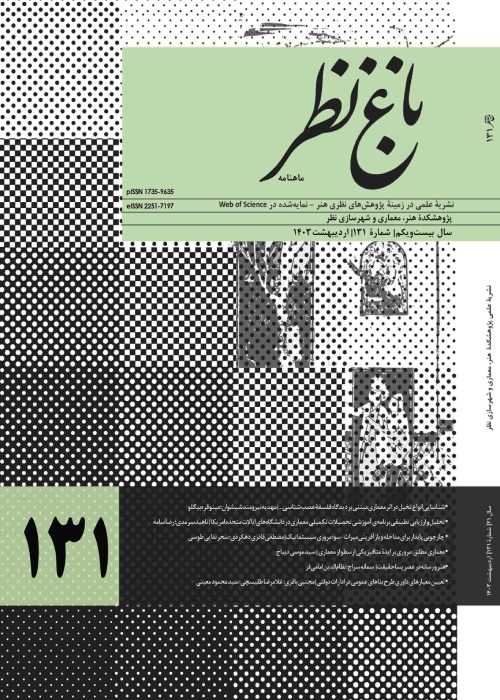Examining the Connection Between the Configuration of In-between Spaces and the Quality of Flexibility by Focusing on Adaptability in Seljuk Grand Mosques
Author(s):
Article Type:
Research/Original Article (دارای رتبه معتبر)
Abstract:
Abstract
Problem statement: Flexibility is considered one of the aspects of sustainability in buildings, as flexible spatial structure and configuration are required to meet their variable needs. Mosques, as one of the most significant spaces for the presence and collective activities of people, have always been used in different cultures and generations and accepted by various social activities. The main structure of Iranian mosques was formed during the Seljuk era, and they have kept this pattern until the present. The in-between spaces are one of the most important features of this structure, which have central roles in providing spatial organization and qualities.
The question raised here is as follows:What connection is established between the spatial quality and the configuration components of the in-between spaces on the one hand, and the quality of flexibility on the other hand by considering the quality of adaptability in the Seljuk mosques?
Research
Research
Problem statement: Flexibility is considered one of the aspects of sustainability in buildings, as flexible spatial structure and configuration are required to meet their variable needs. Mosques, as one of the most significant spaces for the presence and collective activities of people, have always been used in different cultures and generations and accepted by various social activities. The main structure of Iranian mosques was formed during the Seljuk era, and they have kept this pattern until the present. The in-between spaces are one of the most important features of this structure, which have central roles in providing spatial organization and qualities.
The question raised here is as follows:What connection is established between the spatial quality and the configuration components of the in-between spaces on the one hand, and the quality of flexibility on the other hand by considering the quality of adaptability in the Seljuk mosques?
Research
objectives
The research aims to signify the in-between spaces, their spatial definition, characteristics, and place in providing the quality of flexibility in the Grand Mosques of the Seljuk era.Research
method
This research is descriptive-interpretive with a quantitative-qualitative approach and inferential reasoning. The research statistical population includes all Grand Mosques that belong to the Seljuk era based on the ideas of relevant experts and researchers.Conclusion
The spatial flexibility of the mosques in the Seljuk era was investigated based on the quality of spatial integration. The results were evaluated and compared by using two indicators of ‘spatial connection and integration. The research outcomes showed that there are some factors including spatial characteristics and the quality of layout, besides the area factor, that affect the mean-value of spatial integration and connectivity in the Grand Mosques of the Seljuk era. The more in-between spaces (the central courtyard, porch, and entrance space), the higher the spatial integrity and better quality of flexibility.Keywords:
Language:
Persian
Published:
Bagh-e Nazar, Volume:20 Issue: 126, 2023
Pages:
17 to 34
magiran.com/p2647672
دانلود و مطالعه متن این مقاله با یکی از روشهای زیر امکان پذیر است:
اشتراک شخصی
با عضویت و پرداخت آنلاین حق اشتراک یکساله به مبلغ 1,390,000ريال میتوانید 70 عنوان مطلب دانلود کنید!
اشتراک سازمانی
به کتابخانه دانشگاه یا محل کار خود پیشنهاد کنید تا اشتراک سازمانی این پایگاه را برای دسترسی نامحدود همه کاربران به متن مطالب تهیه نمایند!
توجه!
- حق عضویت دریافتی صرف حمایت از نشریات عضو و نگهداری، تکمیل و توسعه مگیران میشود.
- پرداخت حق اشتراک و دانلود مقالات اجازه بازنشر آن در سایر رسانههای چاپی و دیجیتال را به کاربر نمیدهد.
In order to view content subscription is required
Personal subscription
Subscribe magiran.com for 70 € euros via PayPal and download 70 articles during a year.
Organization subscription
Please contact us to subscribe your university or library for unlimited access!


